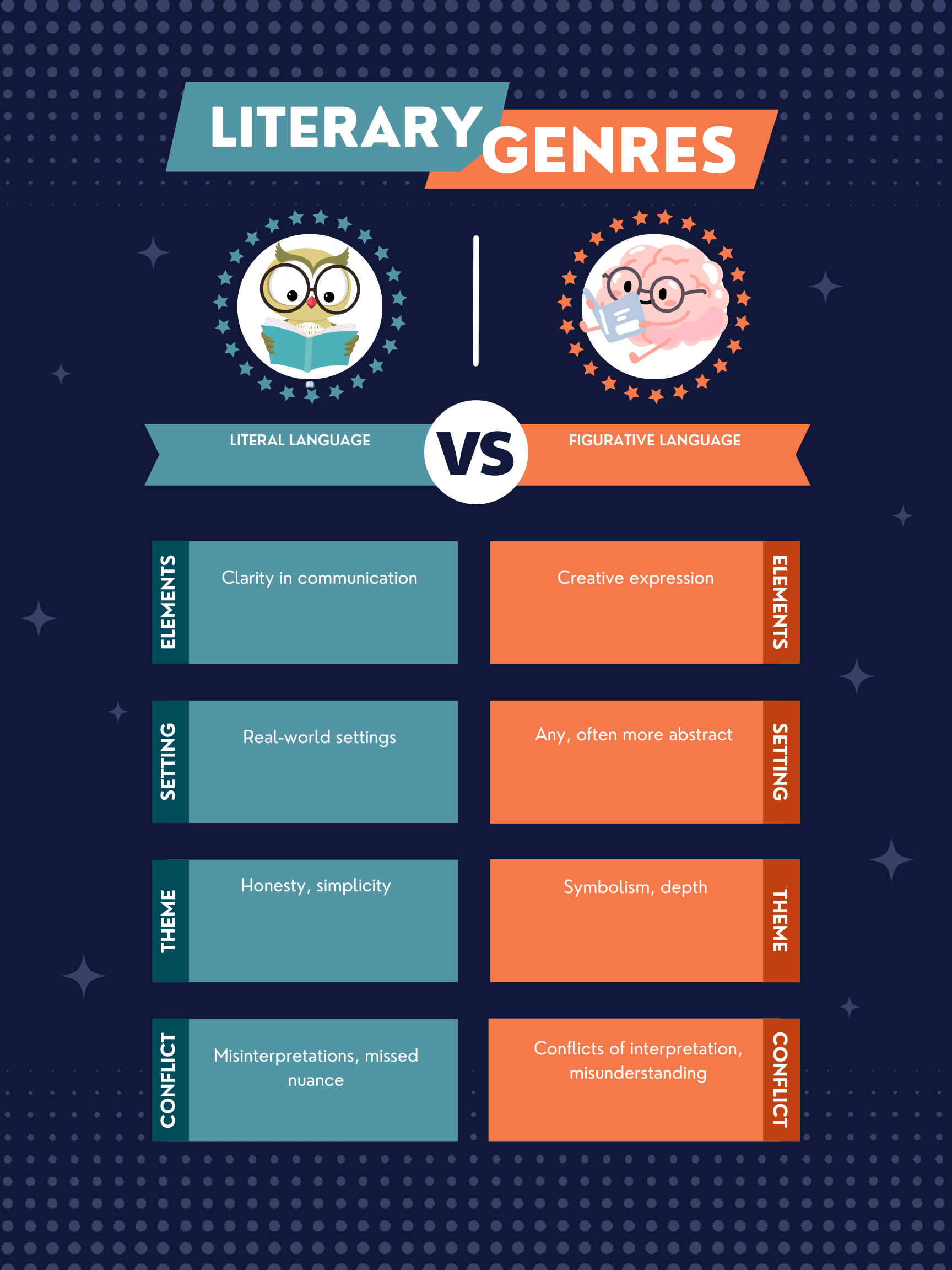Literal language means exactly what it says; Figurative language uses figures of speech to imply meanings different from the literal words.
Literal Language 📚
Literal language is straightforward and means exactly what it says. There are no hidden meanings or interpretations needed. For example, if someone says, “It’s raining cats and dogs outside,” and it is indeed raining plush toys of cats and dogs, then that would be literal (though quite unusual in real life).
Figurative Language 🎨
Figurative language, on the other hand, enriches the text by implying meanings different from the words themselves. It includes metaphors, similes, personification, and hyperbole, among others. For instance, saying “It’s raining cats and dogs” typically means it’s raining very heavily, not that pets are falling from the sky.
Summary
| Literary Device | Definition | Purpose | Usage | Relevant Examples |
|---|---|---|---|---|
| Literal Language | Words convey exact meanings without embellishment | To provide clarity and straightforwardness | Instruction manuals, legal documents, news reports | “The sun is shining.” |
| Figurative Language | Words convey meanings beyond the literal interpretation | To add depth, beauty, and a layer of meaning | Poetry, novels, everyday speech | “The sun is a golden disc in the sky.” |
Writing Tips
For those diving into the realms of literal and figurative language, consider these tips:
- Literal Language: Aim for clarity and precision. When conveying facts, instructions, or descriptions, ensure your words match exactly what you mean.
- Figurative Language: Play with comparisons and associations. Try describing emotions, settings, or actions using metaphors or similes to add depth. For instance, “Her smile was a beacon in the night,” offers a vivid image of warmth and guidance.
FAQs
Q: How can I tell if a phrase is literal or figurative?
A: Consider whether the words mean exactly what they say or if they create an image or idea beyond the literal meaning.
Q: Can both literal and figurative language be used in the same text?
A: Absolutely! Many writers blend both to convey clear ideas while also adding depth and interest through figurative language.
Q: Is figurative language less important than literal language?
A: Not at all. While literal language offers clarity, figurative language provides depth, emotional resonance, and creative expression.
Exercise
Identify whether the following sentences are examples of literal or figurative language:
- “The leaves danced in the wind.”
- “She has a heart of stone.”
- “He arrived at 9 o’clock sharp.”
- “The computer is a dinosaur.”
Answers:
- Figurative (Personification)
- Figurative (Metaphor)
- Literal
- Figurative (Metaphor)
Other Device Comparisons You May Find Interesting
- Simile vs. Metaphor: Exploring the nuances between direct and implied comparisons.
- Hyperbole vs. Understatement: The impact of exaggeration and minimalism in expression.
- Onomatopoeia vs. Alliteration: The sound of words as a literary tool.
- Irony vs. Sarcasm: The subtle and not-so-subtle differences in conveying the opposite of what is meant.
Each comparison opens up new ways to appreciate and use the richness of language, whether you’re writing creatively, for work, or simply enjoying literature from a more informed perspective.

